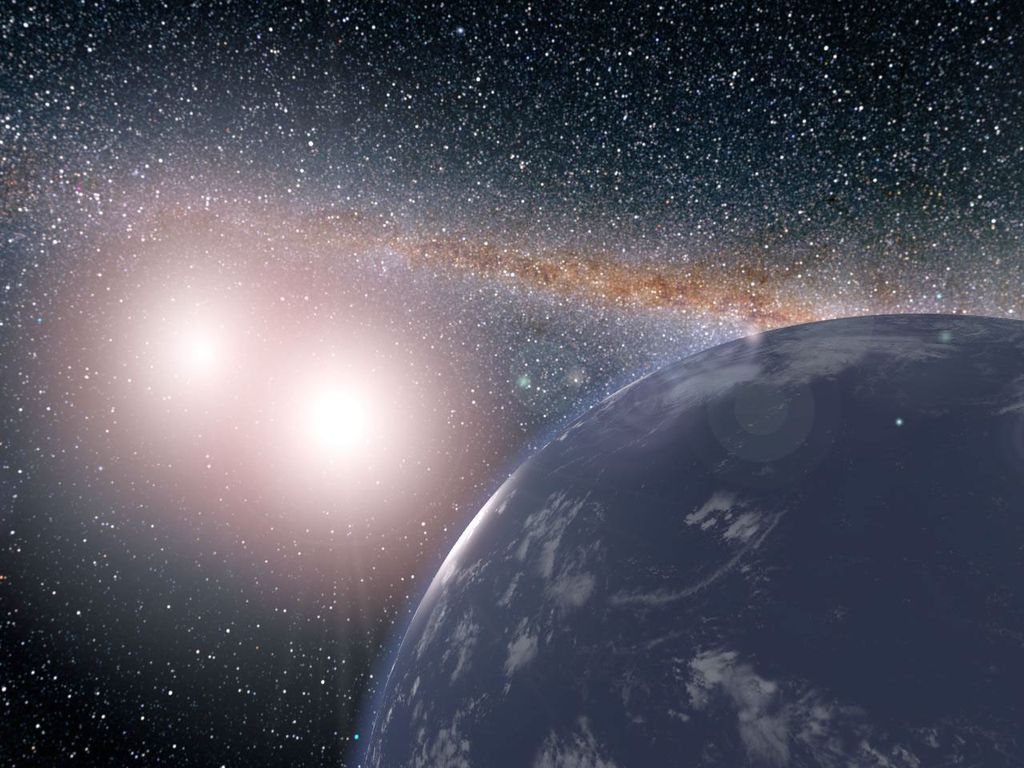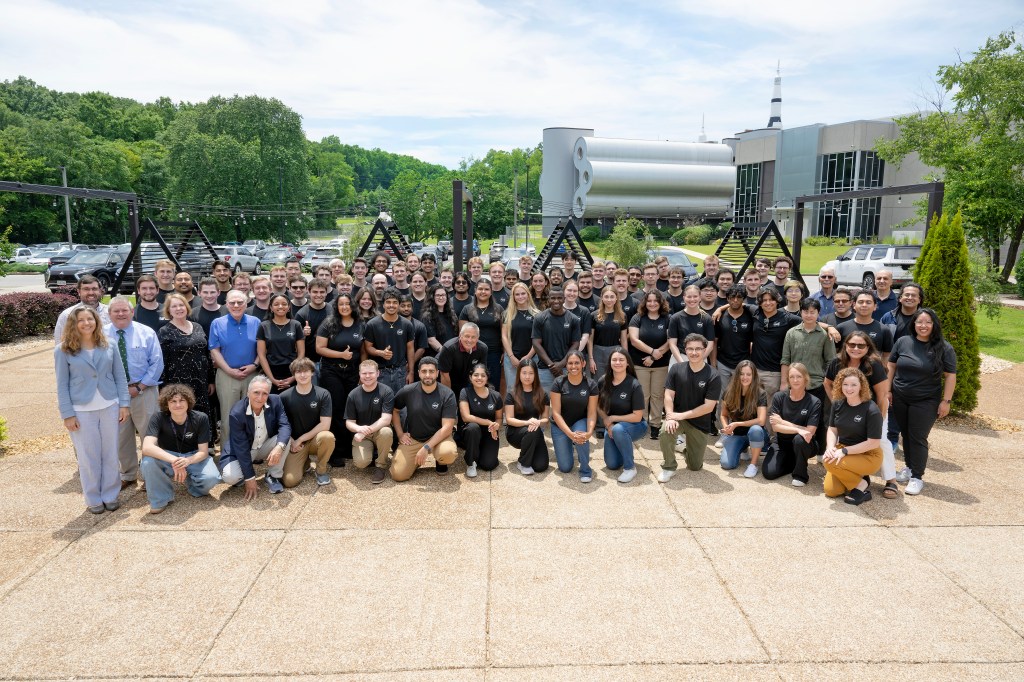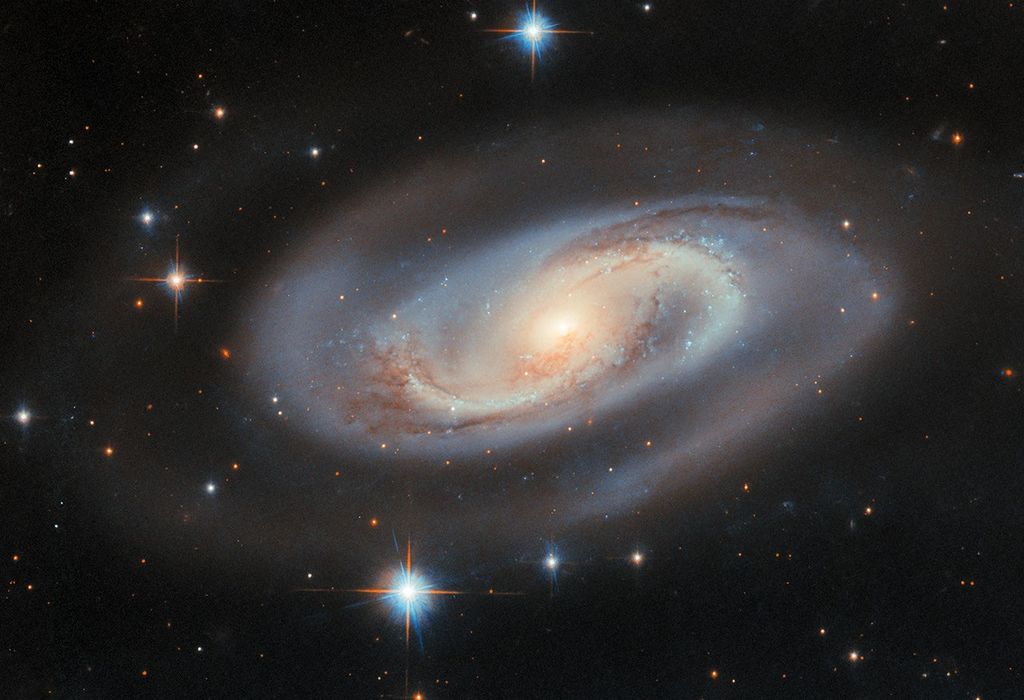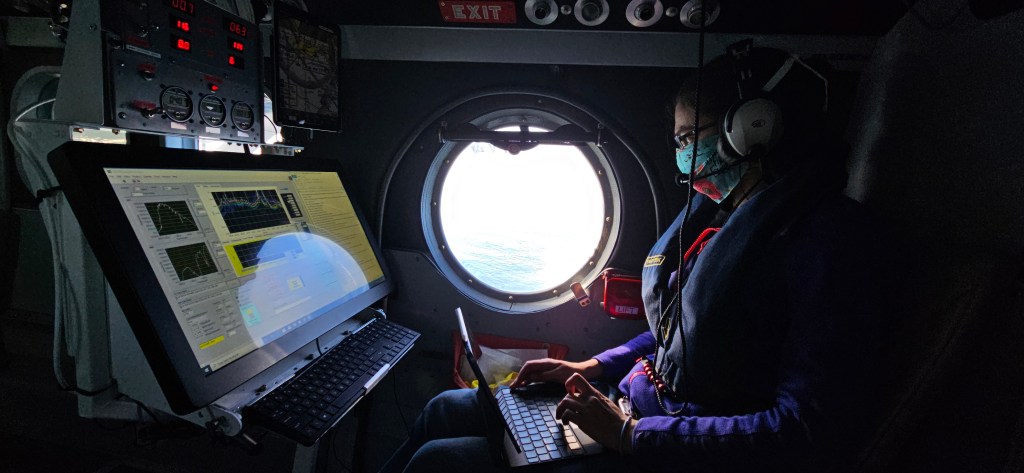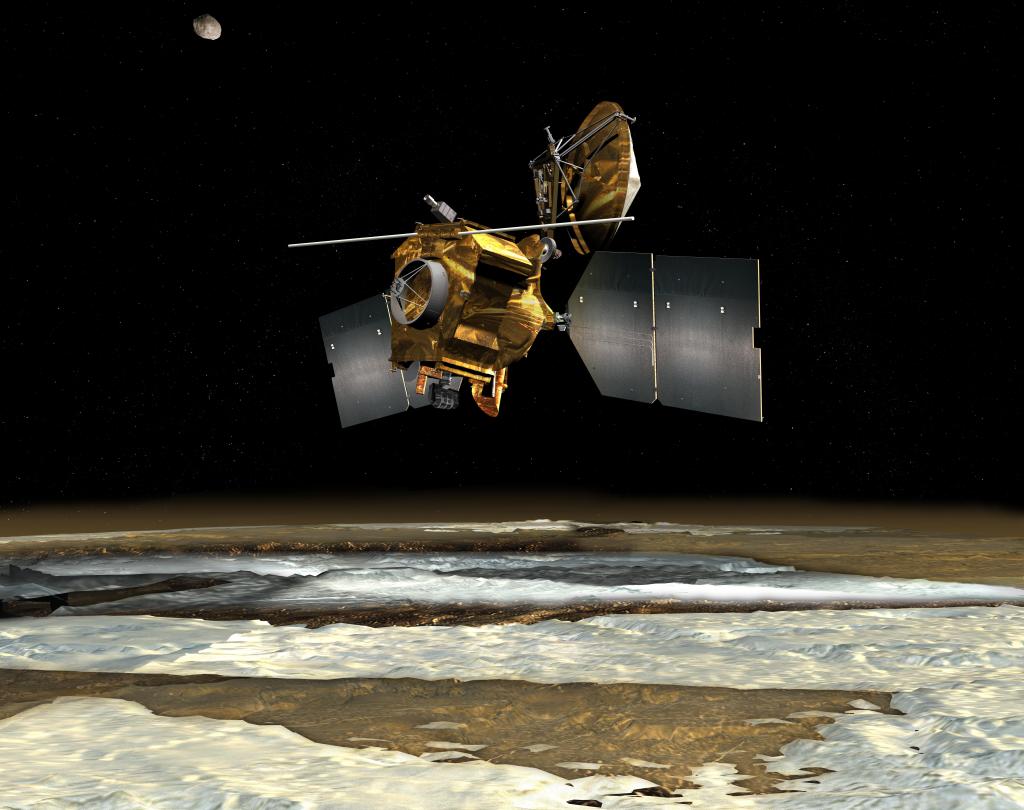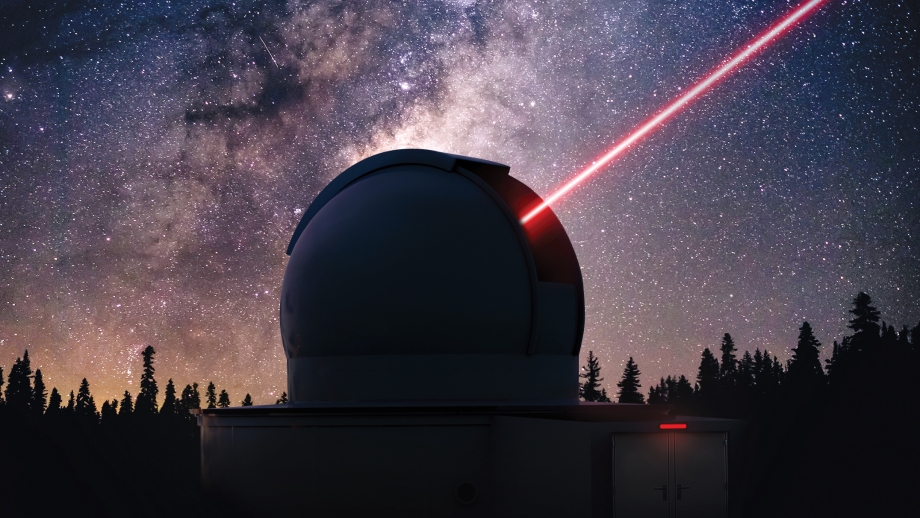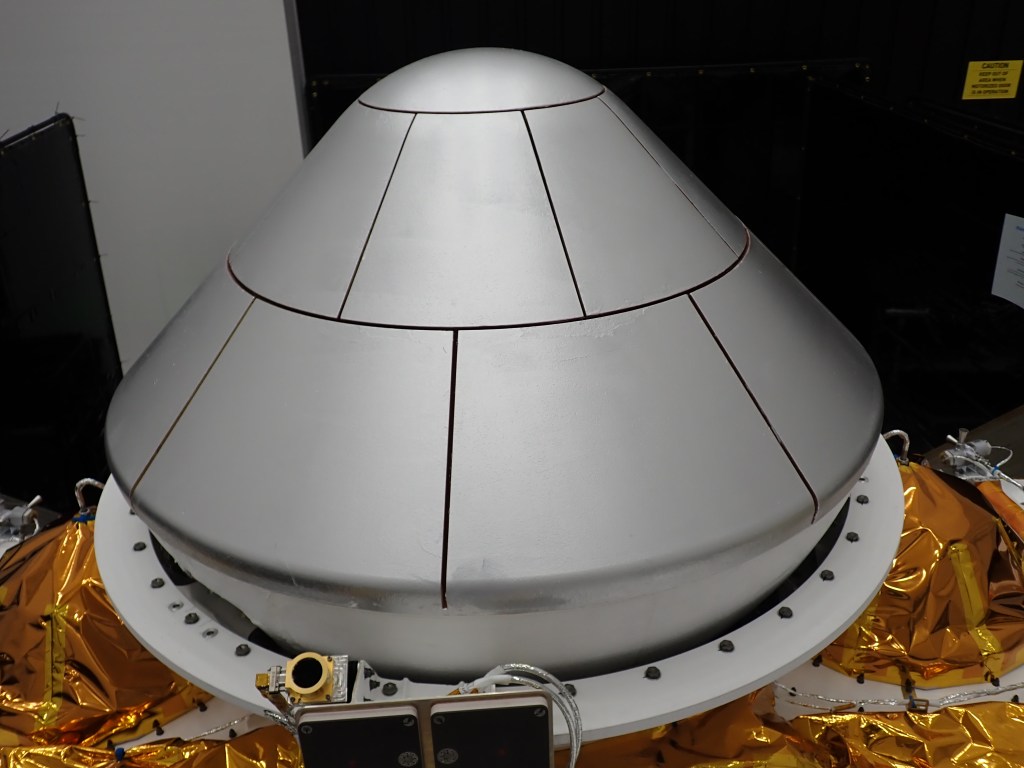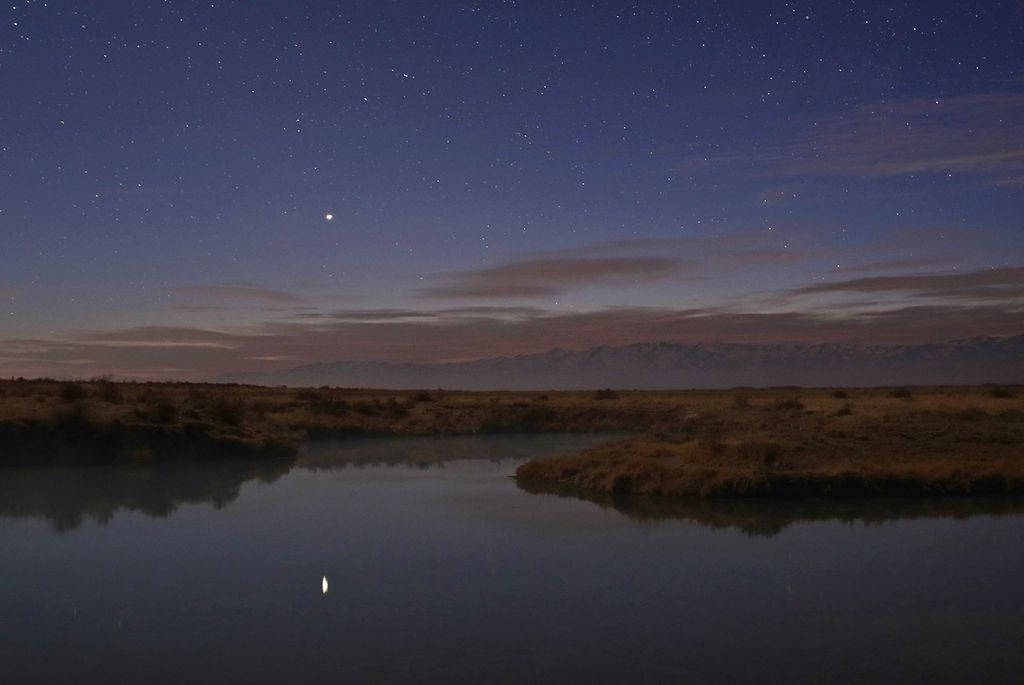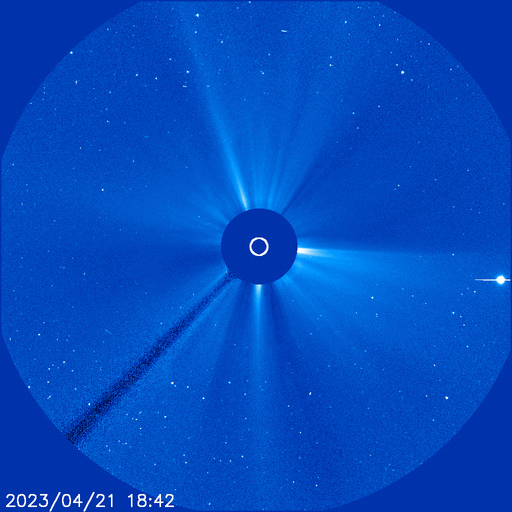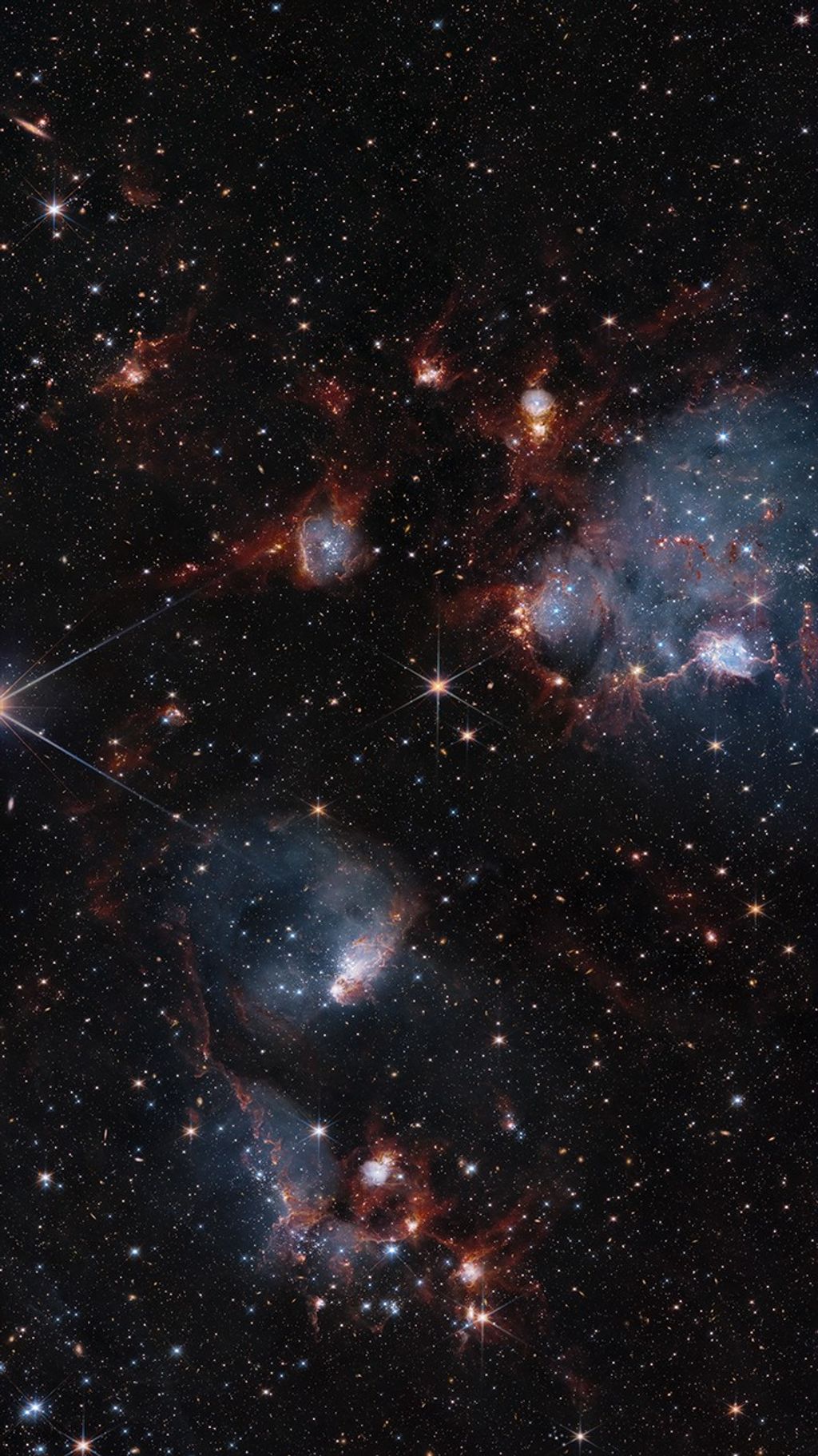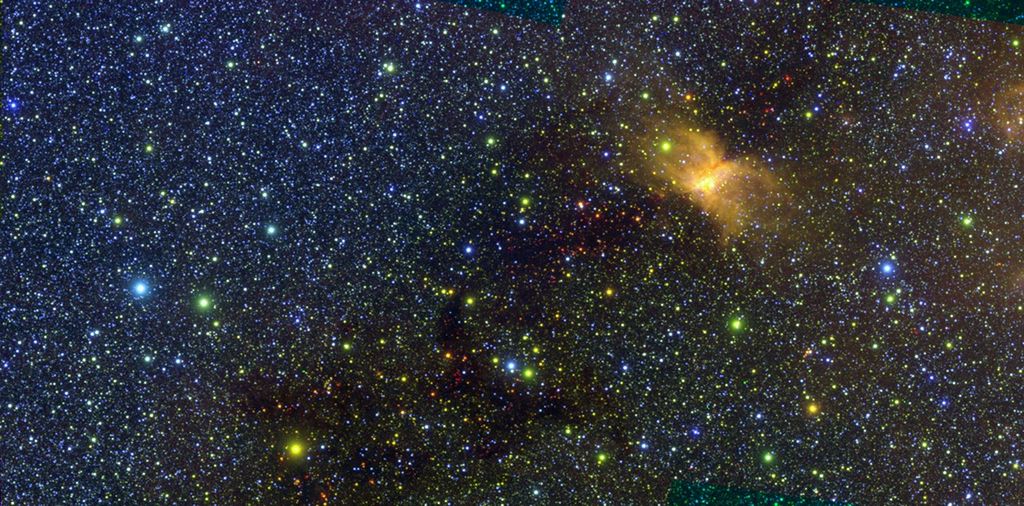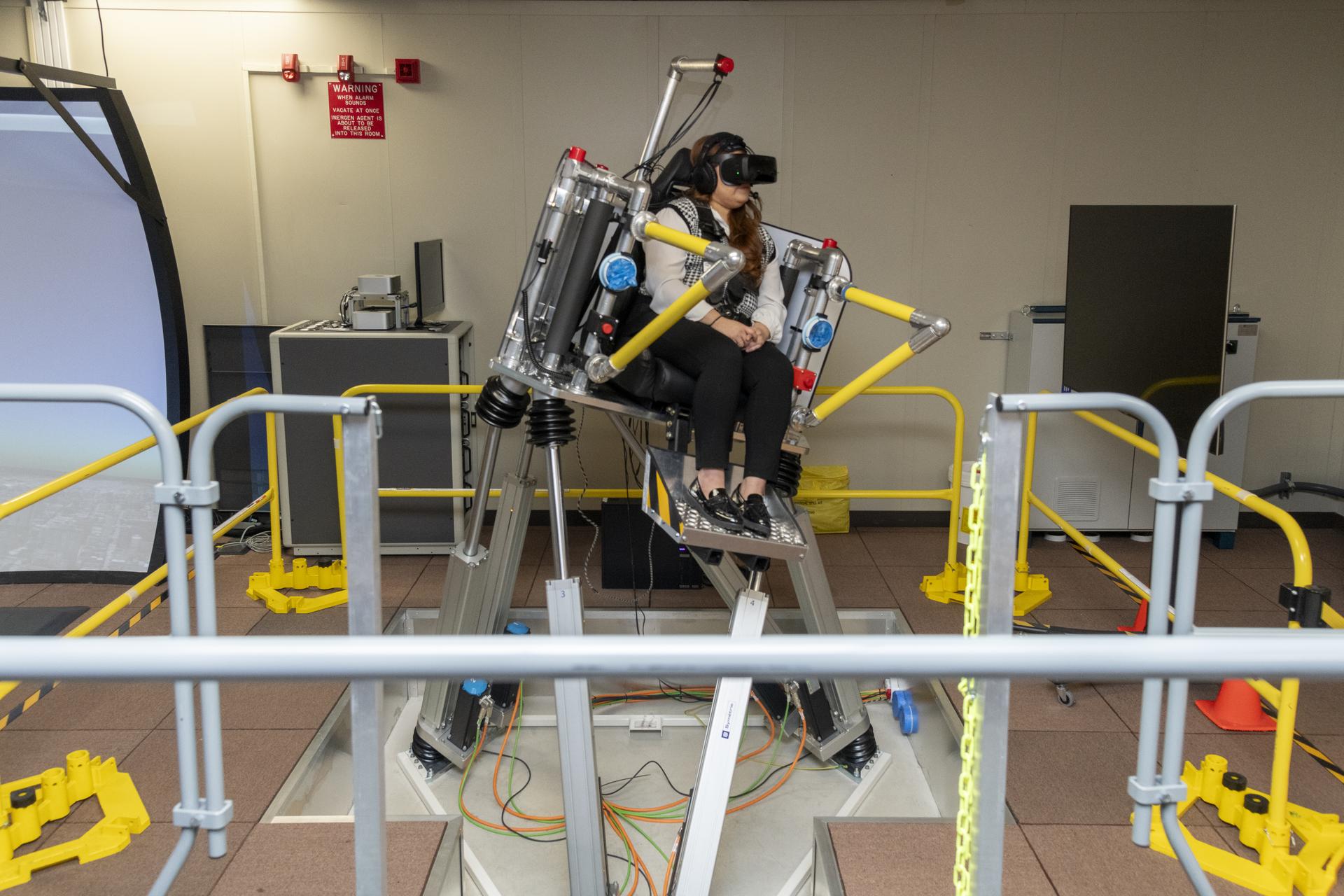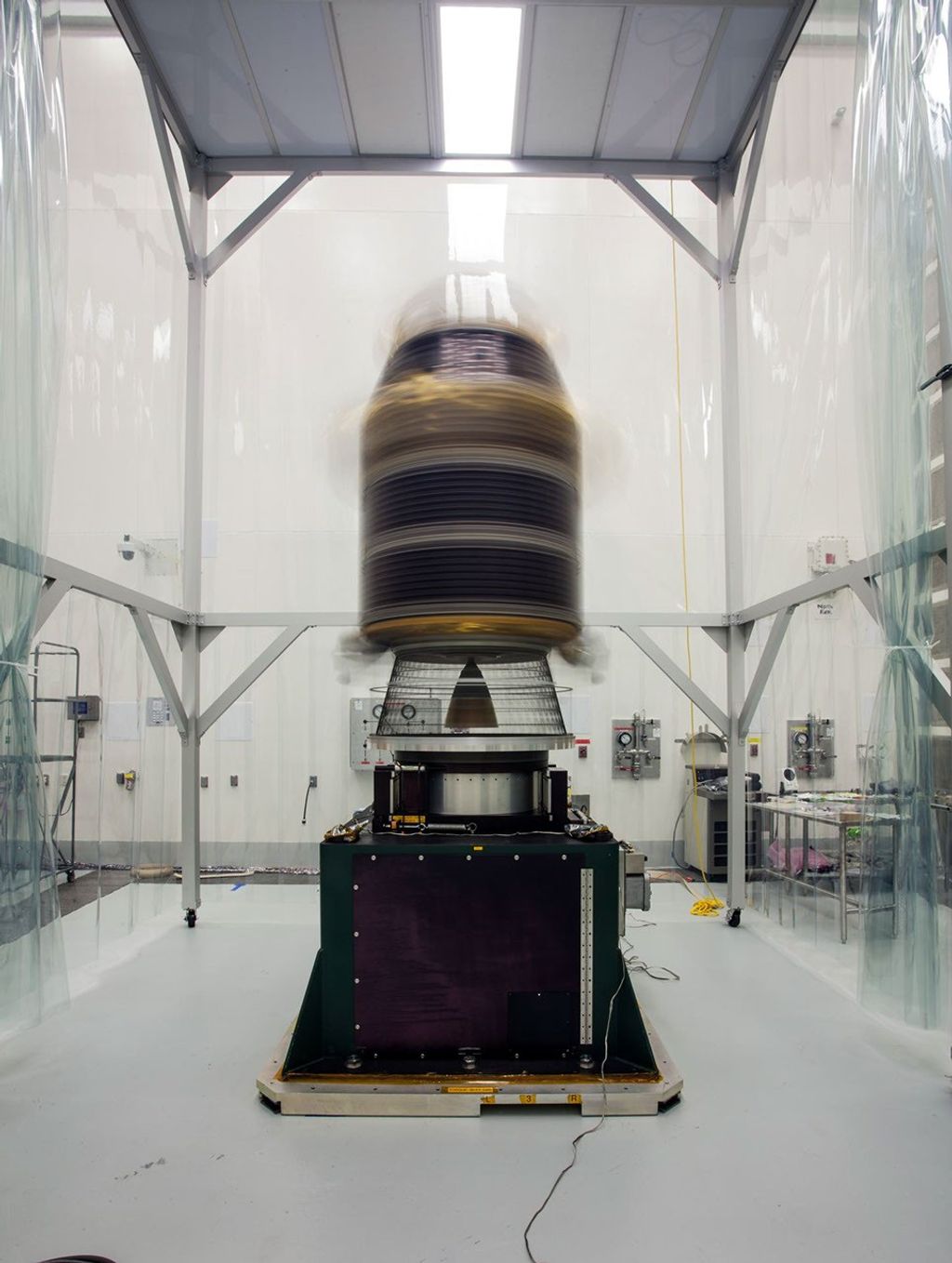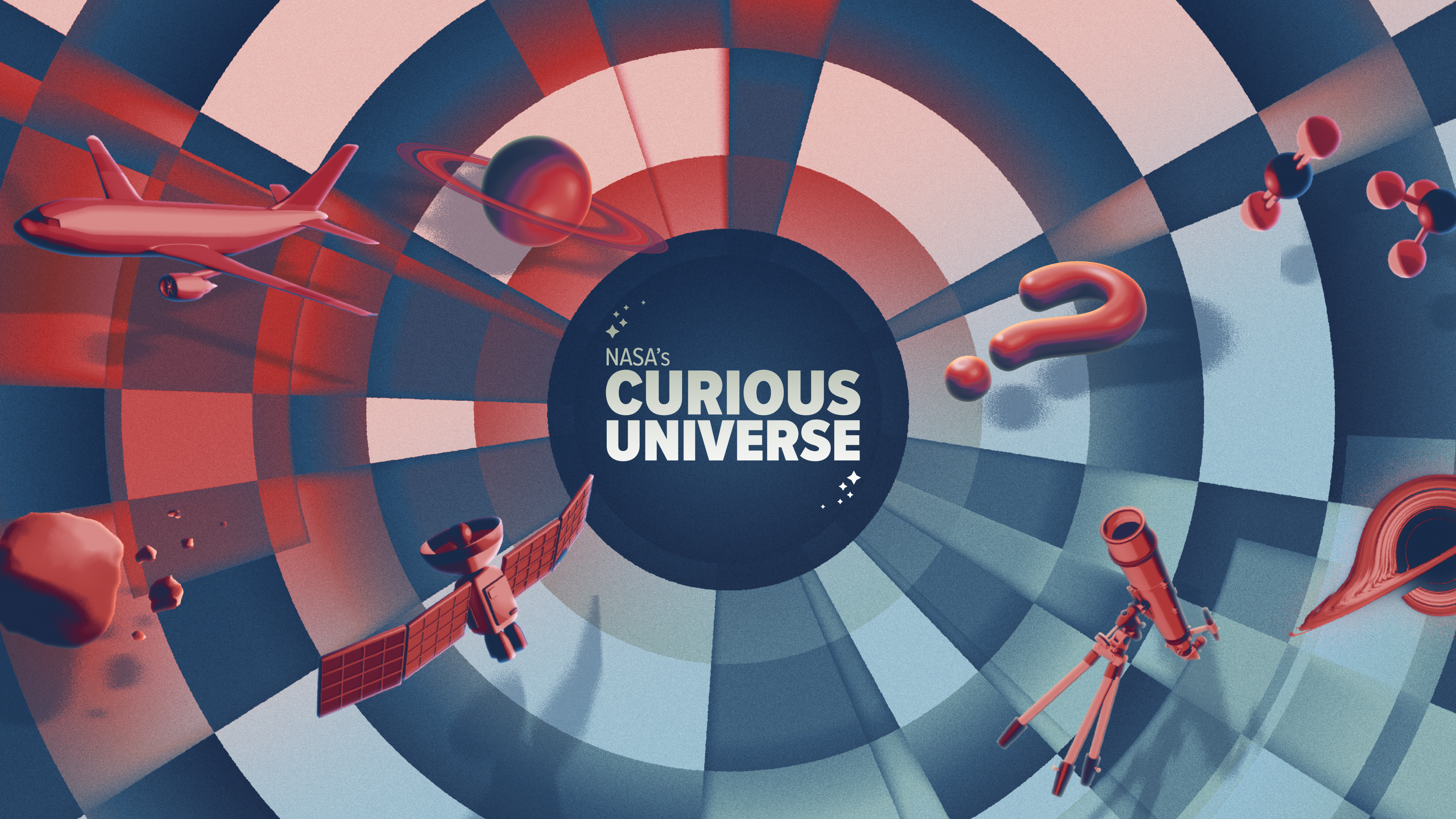NEW! Hey space nerds, excited to learn about black holes? Click here to WATCH this episode.
Episode description:
Black holes are mysterious, far away, and can bend the fabric of reality itself—but we’re learning more about them all the time. Ronald Gamble, a NASA theoretical astrophysicist, uses math, computer coding, and a dash of creativity to peer inside some of the universe’s most extreme objects. We’ll explore what it would feel like to get pulled into a black hole and what people get wrong about black holes. And we’ll answer questions from curious listeners, including, “What would happen if a black hole ate nothing but magnetized material?”

Introducing NASA’s Curious Universe
Get curious with NASA. As an official NASA podcast, Curious Universe brings you mind-blowing science and space adventures you won’t find anywhere else. Explore the cosmos alongside astronauts, scientists, engineers, and other top NASA experts who are achieving remarkable feats in science, space exploration, and aeronautics. Learn something new about the wild and wonderful universe we share. All you need to get started is a little curiosity.
NASA’s Curious Universe is an official NASA podcast hosted by Padi Boyd and Jacob Pinter
Discover more ad-free, original NASA shows at nasa.gov/podcasts
Find the full NASA’s Curious Universe catalog at nasa.gov/curiousuniverse
HOST JACOB PINTER: I just want to get straight into the fun stuff. So, like, if you and I are in a spaceship and we’re headed straight toward a black hole, like, what is that going to be like for us? Like, what’s happening?
RONALD GAMBLE: It’s going to get weird really fast.
[Music: Curiosity by SYSTEM Sounds]
JACOB: This is NASA’s Curious Universe. Our universe is a wild and wonderful place. And in this podcast, NASA is your tour guide. I’m your host for today, Jacob Pinter. In this episode, buckle up because we’re diving in to black holes. They are some of the most mysterious objects in the universe. Ronald Gamble will help us understand what we know about black holes and what’s left to find out. We’ll debunk some of the biggest myths about black holes, and we’ll answer some burning questions sent in by you, the listeners.
Ronald Gamble is a theoretical astrophysicist at NASA. Just to set the record straight, he hasn’t actually been inside a black hole. No one has. But as a NASA astrophysicist, Ronald knows what’s going on in there better than just about anybody.
RONALD: A black hole is a region of space time, right—you know, space and time—where the gravity is kind of so immense, where planets, stars, galaxies, smaller galaxies, even light—photons—can’t escape out. And they are very, very complex objects, but they’re very simple at the same time.
JACOB: Now, we still have tons of questions about how black holes work. But thanks to physicists like Ronald, we’re learning more about them all the time.
[Music: “Research and Development” by Carl David Harms]
Ronald is one of those scientists who is constantly surrounded by long strings of numbers.
RONALD: The best way I can describe it, research wise, is if you see—picture Einstein or somebody at a chalkboard writing all these equations, that’s what I literally do all day. It’s a lot of math, it’s a lot of science, but kind of finding ways to mash those things together—physics, quantum physics, electromagnetism, space-time, relativity, all of that—all together kind of gives you an idea of what’s happening around black holes.
JACOB: The math tells us that as we approach a black hole in our hypothetical spaceship, we will pass a point of no return. Now, black holes rotate, just like planets, or stars. Once we get close enough, we start to rotate along with the black hole. It’s like we’re stuck on some kind of interstellar merry-go-round.
RONALD: So space-time is literally being dragged around. You have no choice. Reality itself is being dragged around the black hole.
JACOB: Okay.
RONALD: But as you get closer, then you’ll approach something called the event horizon. And right on the edge, before that, if someone were watching you—I always make the joke of throwing my brother into a black hole. Sorry Mark, you’re the tester. But he would freeze on the surface. There would be a point, and we call that an infinite redshift surface, where the light that’s emitted from you stops.
JACOB: Wow.
RONALD: That’s it. So that’s the last image that you will see, right, of us going into the black hole.
JACOB: From there our trip only gets more bizarre and probably more scary. Depending on the size of the black hole, we may go through a process called spaghettification. That means the black hole puts so much force on us that our bodies stretch way out, like noodles.
RONALD: We don’t know what’s inside.
JACOB: Sure.
RONALD: Maybe my old quantum homework is in there or something. You are under a lot of gravitational pressure, meaning all of the gravitational force that is a black hole is now on top of you. And you’re continuing to fall, fall closer and closer to the singularity, or what we would then consider the center of the black hole, which, again, you are falling an infinite amount of space. So space-time inside of a black hole behaves very different than it does outside.
JACOB: As we fall toward infinity, it may get extremely bright and incredibly hot. And then—(snap)—it’s someone flips a switch. No more light. And after that? No one knows.
RONALD: If we could go there, please collect some information and send it back to us.
JACOB: Now, there are some obvious challenges to studying black holes. They’re far away. No light can escape them. And in many ways, they’re just weird. But we manage to learn about them in two main ways.
[Music: “Robotica” by Carl David Harms]
We gather observational data, like looking through a telescope. We can observe how the stuff around black holes behaves. That’s because it puts out types of light our eyes can’t see, including X-rays and radio waves. We can study those. And then we have theory—using math and physics to unpack what exactly is going on in there.
So black hole researchers actually have a lot to work with, and we find black holes all over the universe. Some are about the same mass as our Sun. Others are much, much larger. Take our own Milky Way galaxy. In the center—which, don’t worry, is too far away to cause us harm here on Earth—there’s a supermassive black hole. It’s about the mass of four million Suns. And other black holes are even bigger.
Ronald Gamble studies black holes with a blend of old-fashioned math and computer-based modeling. He knows a dozen different coding languages, and he’s also a mentor to young scientists trying to break into the field. So I wanted to back up and hear where he started.
(to Ronald) I was hoping that you can tell me kind of your superhero origin story. Like, when did you realize that astrophysics and black holes were going to be, like, your thing?
RONALD: My mom would say, four years old. I would say there’s a villain arc in there somewhere. But yeah, four years old, in front of my solar system little placemat, probably tossing my mashed potatoes somewhere. And I’m asking my mom, does the sun have fire? So at four years old, I’m like, Okay. And she’s like, Okay, I need for you to be in camp somewhere. I watched Carl Sagan, I watched Bill Nye, and then things like Magic School Bus. It just kept getting more curious and more curious, and I kept asking more questions. So that’s how I got into it. And then I discovered all the things that we didn’t know about the universe. I’m like, Okay, well, I want to study those. What’s dark matter? What’s dark energy? What’s—there’s new stuff about black holes we have to discover. So that’s, that’s how I’m in this. It’s a lot of fun.
JACOB: I think a lot of us have a hard time picturing how researching black holes, like, actually works. Like, I’m not very good at math, if I’m honest. I can’t code. I’m just wondering if you can kind of put me in your shoes for like, a typical day or a typical project.
RONALD: Yeah. So right now, I’m working on a code that’s going to describe or simulate how high energy particles, like electrons kind of rotate around the black hole and then get blasted off in jet. So part of that work involves looking at plasma physics. It looks looking at kind of numerical calculus. So that’s kind of doing calculus on the computer. But then also, how do I incorporate those very theoretical things with the observational data?
JACOB: Yeah, so tell me more about that difference, or that breakdown between observational and theoretical because I think, again, for those of us on the outside, black holes are just so—they’re so spooky and so mysterious that it can be hard for us to tell what we have observed, you know, in the data for sure, and then what people like you are theorizing in your—through math equations on your chalkboard and so forth.
RONALD: Yeah, so we have to—first thing I’ll say is, black holes are actually very simple. So we only need about three or four numbers to actually describe a black hole. Mass, spin, might be the area of the event horizon, right? And the charge, right? So black holes do have some charge. It’s on the surface, but that’s it—
JACOB: Charge like positive, negative?
RONALD: Positive or negative. You can think of a charge collecting up around a black hole kind of like static charge. It’s collecting up, right? But those four numbers are kind of what we use to kind of funnel in our observational data.
JACOB: And then how do folks like you take that and kind of run with it and theorize, you know, the next part?
RONALD: We do what’s called bad math, and then we correct to good math. We work to—that’s called modeling. So we work to kind of fill in the gaps for that observational data. And we, again, it’s as simple as turning the crank on the math.
[Music: “Event Horizon” by Brandon Seliga]
JACOB: As we keep cranking through the math, we’re finding new ways that black holes can surprise us. Once matter or light falls into a black hole, it doesn’t come out. That’s what makes them black. But just outside the black hole, there is a swirling disk of hot, bright gas. Most of that gas ends up inside the black hole. But not all of it. Some of the gas shoots off, racing away at almost the speed of light in a stream that can be incredibly long—like, millions of light years. Those streams are called relativistic jets. And when one of those jets happens to point straight at Earth, we give it a special name: blazar.
RONALD: You can think of them as kind of black hole lasers or lighthouses. So they’re coming not inside the black hole, because nothing can come out.
JACOB: Yeah.
RONALD: But they’re coming right off the surface, right? Part of the reason why they get blasted off is due to the magnetic fields around black holes, and there’s hot plasma and everything kind of circling around like a soup. Eventually it will spew out, and that is what a jet is. There are still unknown questions as to why the black hole spews a jet out, and why these particles go from zero to light speed in an instant.
JACOB: Wow.
RONALD: Yeah, so that’s part of my research, trying to figure out the why.
JACOB: Maybe this is a weird question, you tell me. But do you have a favorite black hole?
RONALD: I do.
JACOB: Yeah?
RONALD: Yeah. So, well, I have two favorites right now. One is—and I’m gonna give you the catalog name.
JACOB: Please. I’ll look it up.
RONALD: We don’t have formal names for these. One is M87. So you might have heard about M87. Sag-A* is the black hole at the center of our galaxy. M87 is kind of a, what I call a well-behaved black hole. It’s playing nice. It’s very tilted at a nice angle for us to observe, giving us great data. But the other one is called TXS 0506+056. That’s a lot of stuff there.
JACOB: Sure.
RONALD: But it is a very high, energetic, very variable blazar that is giving us weird data. It’s blowing everything off the charts. It’s very, extremely bright. It’s one of the brightest things you might see in the sky.
JACOB: Wow.
RONALD: With your telescope, of course, it’s very far away, but it is giving us some really cool data, some really cool physics.
JACOB: You know, black holes are super, super popular. Like, we get questions about black holes all the time, which we’re going to ask you a few of. But it makes me wonder, are there any misconceptions about black holes that you hear a lot, that you keep having to clear up?
RONALD: I’m so glad you asked.
JACOB: Yeah.
RONALD: One of the, I would say the the most widely known misconception is when you type in “black hole” on Google, you might see, like a funnel picture.
JACOB: Yeah.
RONALD: Black holes are spheres.
JACOB: Okay.
RONALD: So they’re not a funnel. You can’t just fall into it like a well. It’s a sphere. So—and not only is a sphere, it’s not a perfect sphere. So it’s kind of flattened at the poles because it rotates so fast.
JACOB: Huh.
RONALD: So you can think of it as kind of like a very fat football, right? Or an egg shaped. From the top down, it looks like a circle. It’s got that symmetry. But from the side, it’s flattened.
JACOB: Wow.
RONALD: Yeah.
JACOB: Trippy. [laughs]
When it comes to black holes, Ronald is curious about pretty much everything. But here on this show we also like to know what you’re curious about. We want to hear what questions you would ask a NASA expert. And it turns out a lot of you are curious about black holes.
[Music: “Driving” by Paul Hartnoll]
So we picked some of our favorite listener questions and I put Ronald in the hot seat. The first question came from Ashlee. They listened to a previous episode of Curious Universe called “Inside a Black Hole.” In that episode, we mention a quantum physics phenomenon called Hawking radiation. It’s named after the famous physicist Stephen Hawking. The idea is that little by little, black holes can actually evaporate, although it would take something like trillions of years to disappear completely, which is an almost impossibly long amount of time.
Anyway, Ashlee wanted to know more about Hawking radiation. And they also asked how a star or planet can orbit a black hole. How can the black hole’s gravity hold something in place, because wouldn’t it simply suck in the planet or star?
RONALD: Okay, so this is a two-parter. Well, we can tackle the Hawking radiation first, because that’s the fun one. Without going too deep in the weeds for quantum field theory, Hawking radiation—it is a quantum effect, but you are kind of looking at what the thermal properties of the horizon looks like, right? So if I’m zooming in—not on the large scale, where planets, stars, and things get pulled in but on the very, very small scale, the particle scale—well, what happens around the black hole? Some particles may fall in, some may get kicked out.
JACOB: Hmm.
RONALD: So we’re now going more fundamental to the laws of thermodynamics as they apply to black holes. Hawking radiation is kind of an effect of one of those laws where the entropy of a black hole cannot decrease. But on the surface, what happens? Well, that information can’t get lost because it’s in our universe.
JACOB: Okay.
RONALD: We should still have access to it, but it gets thermally radiated, right? But as you kind of radiate away, you’re taking some energy away from the black hole. Eventually that black hole area, it will shrink. The surface area should shrink. And if it keeps doing that and keeps doing that, the black hole will theoretically evaporate due to Hawking radiation. Now that time scale is on the order of, like, I don’t know, maybe 10 to the 64 years. That’s a long range …
JACOB: Don’t wait up.
RONALD: Don’t wait around for it. But that’s Hawking radiation in a nutshell.
JACOB: I understood that. I’m with you. I’m tracking. So let me get to the second part of her question, though, to make sure Ashlee walks away happy. She asked how a star or a planet can orbit a black hole. Wouldn’t the black hole simply suck in the planet or star?
RONALD: Not necessarily. So it’s kind of like how the moon doesn’t necessarily fall in towards the Earth, even though it’s locked to the gravity of the Earth. It carries enough angular momentum, enough spin to orbit around the Earth and stay in that orbit. So within the accretion disks of black holes, you could have solar systems. You can have a bunch of—you could have thousands of stars, especially supermassive black holes at the centers of galaxies. They’re just going to continue to kind of orbit around and orbit around. They do pick up some heat, some speed, and eventually the force of gravity, the tidal forces if you will, they will start to shred that star apart.
JACOB: Wow.
RONALD: And then eventually it will fall into a black hole. Black holes don’t necessarily suck things in. They kind of pull them in.
JACOB: I hope that answers Ashlee’s question. All right, let’s go to number two. This is from Tijana. How do scientists at NASA overcome the challenges of studying the vastness of space and gathering data from such distant objects? That’s a big question.
RONALD: I would say—so, just like the podcast, we get curious, right? We get curious and we get creative. So part of being an astronomer and astrophysicist and doing the work from the ground, and you’re looking at things millions of light years away, you have to get creative. The universe is only sending us a little bit, teeny bit of information, and what are we doing with that information? Well, we’re building things like Roman, James Webb, Habitable Worlds Observatory’s coming up, LISA—things like that to gather those little bits of information that we can get to give us large science. So we are making giant leaps and bounds. But part of that is getting younger people to get more interested in the science, give us more creative thoughts.
JACOB: Yeah.
RONALD: We need a diversity of thought to kind of do NASA science, and that’s how we get it done.
JACOB: Yeah, great. Well, here’s our next question. This one is from Rusty. This is the one I’m most looking forward to.
RUSTY ASHLEY: Hello, my name is Rusty Ashley and I live close to Austin, Texas, and my curiosity is if magnets were created in the Big Bang. And also, what would happen if a black hole only consumed magnetized material and nothing else? Would that change their fundamental behavior in any way compared to normal black holes? Thank you.
RONALD: So here’s a common misconception. Yeah, black holes actually only consume magnetized material.
JACOB: Oh!
RONALD: Because it’s technically a plasma, which is magnetized.
JACOB: Okay.
RONALD: So if you take anything that has charge, you’re rotating around in an orbit, yeah, it will create a magnetic field. That’s Physics 101.
JACOB: Yeah.
RONALD: So pretty much you can think of everything that falls in is kind of magnetized to some extent. Now, magnets being created at the Big Bang, that’s an interesting question, because one of the questions that astrophysicists ask is, Well, where did all the magnetic fields come from? From objects, things like pulsars, magnetars—which you can think of like as a magnetic star—those are the strongest magnetic fields in the universe. Where did these things come from? You have to go more fundamental than that. So you have to look at the four fundamental forces of nature: gravity, electromagnetism, and the strong and weak nuclear forces. All of those together have to combine. They got to squish together, right? They got to create a soup to give us things that do create magnetic fields. There’s a lot of physics involved in the background. So I can’t give you like the complete, big picture cosmological answer. But that’s why we have a field called physical cosmology so that we can discover some of those things in the early universe.
JACOB: So the short answer is, stay tuned?
RONALD: Stay tuned. There’s a Nobel Prize somewhere.
JACOB: That’s right.
So before we wrap up, there’s a couple other things I want to ask you about. One of them is art, because I have seen like, art and graphics that you’ve made, and I was just blown away. Like, they were really good.
RONALD: Thanks!
JACOB: How did you get started doing that? Like, what is that side of you?
RONALD: I have been probably doing art since I was a kid. In undergrad, I majored, double majored in physics and fine art. So I have a minor in fine arts. But it helps to kind of combine left and right brains, which for me, I couldn’t separate them. And it really helps, kind of visualizing the science, helps you learn better to really visualize some of these complex things. What is a black—how do I draw a black hole? Well, again, it’s a sphere, but pinch it maybe. So it’s those things, and then the math comes into play, right? Thank you Pythagorean theorem for giving us triangles.
JACOB: I’m always really curious how people who are really good at science bring in, like, all of the rest of their lives into that, like all of their other interests in the way that they tackle problems. Like, do you think that being an artist or being interested in art makes you a better scientist?
RONALD: I think it does. So it—me being in theory, I have to come up with new physics, or new ways to describe physics, in very creative ways. We have a finite amount of math and physics that we’ve discovered so far.
JACOB: Sure.
RONALD: We have to use it all, right? So it’s again, like, kind of—a chalkboard is like a blank canvas for me, yeah, you know, well, I gotta start from scratch. I’m like, Okay, well one equation, it’s like a Lego. And if I keep stacking, I might build, you know, a DeLorean or the Millennium Falcon or something, and that’s what we get. And then I can break it apart and make something else. And so I think being a good theorist, being a good scientist, requires an amount of right brain creativity, right? I think you need a very holistic view of science and how we do it to be really creative. That’s how you get the new stuff.
JACOB: I know that something else that’s a big part of your job, and I assume just kind of like a passion project too, is mentoring people. Why is that so important to you?
RONALD: My kind of mantra is kind of providing the world, what I needed most when I didn’t receive it. So it’s—mentoring to me is giving the student, you know, that push, that motivation, that inspiration, the recommendation, and the advocacy—somebody in your corner cheering you on, right? Because I didn’t have many mentors like that. I had my few, and they were fantastic. But again, I didn’t have many peers kind of doing that. And then, you know, how do you build that confidence in the field? Astronomy and astrophysics is very—it can be very intense if you don’t know how to navigate it. So that’s why I like to do mentorship.
JACOB: Yeah. What is something that either early career scientists or students or even kids should understand about your job and what it takes to be successful in the kind of work that you do?
RONALD: It’s plain and simple, don’t stop. And I would say, like, don’t stop, get it get it, but quite literally, just don’t stop. There are going to be tons and tons of people that will tell you, Oh, maybe you should choose something else that’s a little bit more—you can be successful at it or, well, the likelihood of you being at NASA is actually very… Well the likelihood of you actually getting NASA’s not zero. So do it. So that’s the first, very first thing I tell people every talk that I give, I’m giving them, Okay, this is where I started from. If you—if I could get out of here, you can get here too. But another thing I will say is that again, not only just, you know, not stopping, but also not getting in the way of yourself. So and that, again, will drive you to keep doing it. If you don’t get it the first time, you might get it the second, third, fourth, fifth, sixth time, right? So I’ve applied to NASA, I think maybe four times. And so you just have to keep being resilient. And it will come. If you keep working on your dreams, they will become reality.
[Music: “Delicate Balance” by Matt Norman]
JACOB: Ron Gamble, thank you so much. This was so fun.
RONALD: Thanks! Thanks for having me
JACOB: Among his many titles, Ronald Gamble is the director of a NASA program called Cosmic Pathfinders. That’s one way for students or early career scientists to get involved with NASA science. And when it comes to black holes, there is a lot more to learn. You can find more about NASA’s black hole research at science.nasa.gov/universe. And if you just scroll back through the Curious Universe feed, you’ll find an episode called “Inside a Black Hole”.
And we would love to know what you’re curious about, about black holes, or anything else. You can send us an email. Our address is nasa-curiousuniverse@mail.nasa.gov.
This is NASA’s Curious Universe. This episode was written and produced by me, Jacob Pinter. Our executive producer is Katie Konans. The Curious Universe team also includes Christian Elliott, Maddie Olson, Micheala Sosby, and of course Padi Boyd. Krystofer Kim is our show artist. Our theme song was composed by Matt Russo and Andrew Santaguida of SYSTEM Sounds.
Special thanks to NASA’s astrophysics team, including Claire Andreoli, Barb Mattson, and Amber Straughn. We had multimedia support from Rich Melnick, Rob Andreoli, and John Philyaw. And a big thanks to Scott Wiessinger. He edited a special video version of this episode, which you can find on YouTube.
And as always, if you enjoyed this episode of NASA’s Curious Universe, let us know. Leave us a review. And even just tell one friend—one friend—who you think is a space nerd who wants to hear more of these wild and wonderful adventures. You can also follow us in your favorite podcast app to get a notification each time we post a new episode.

